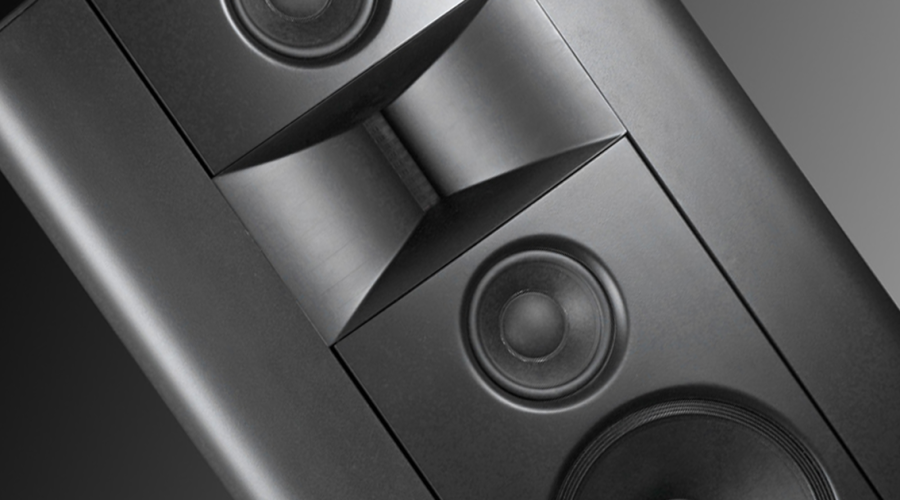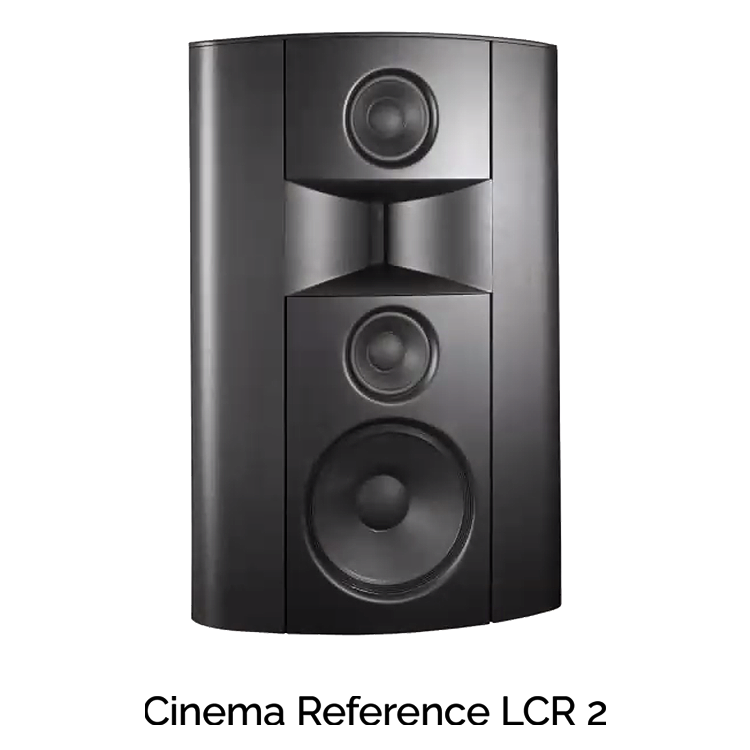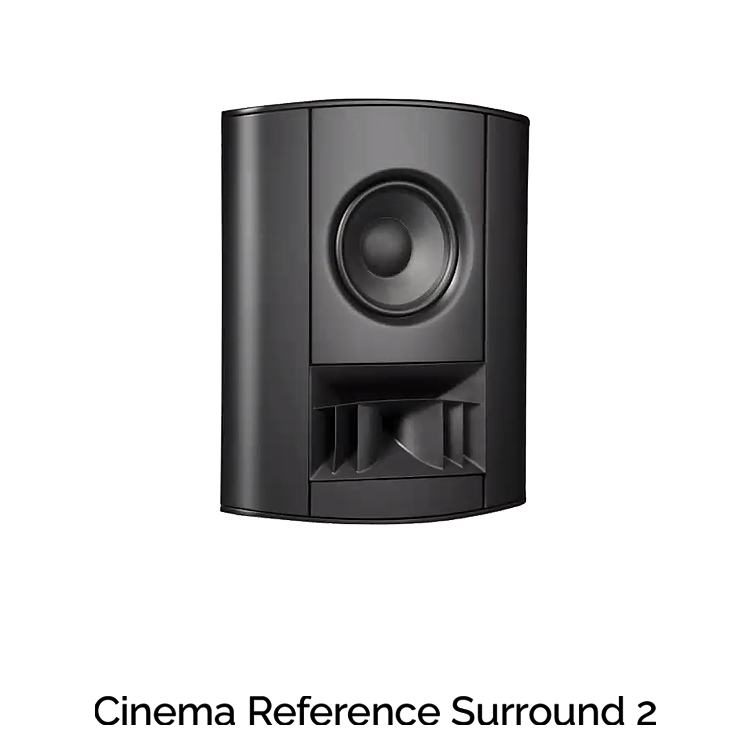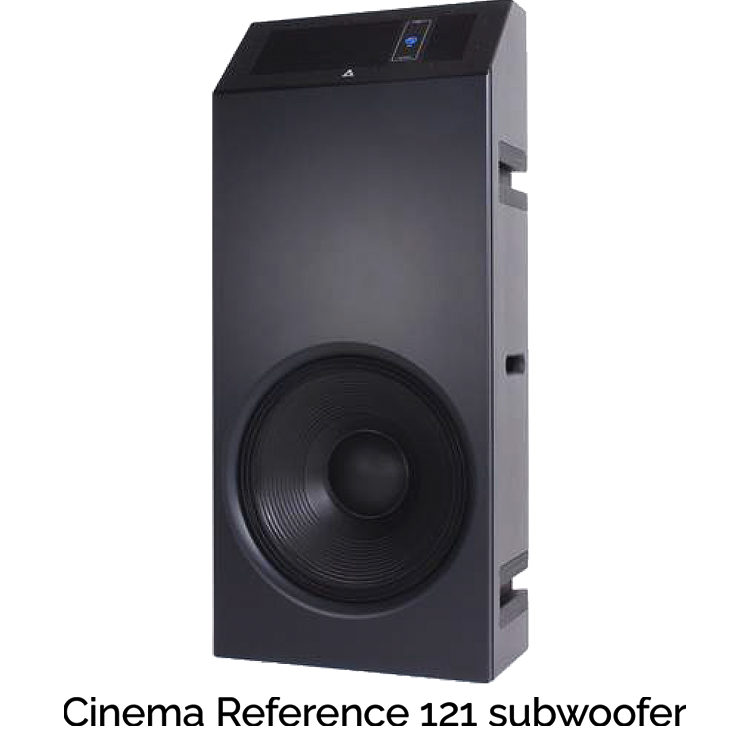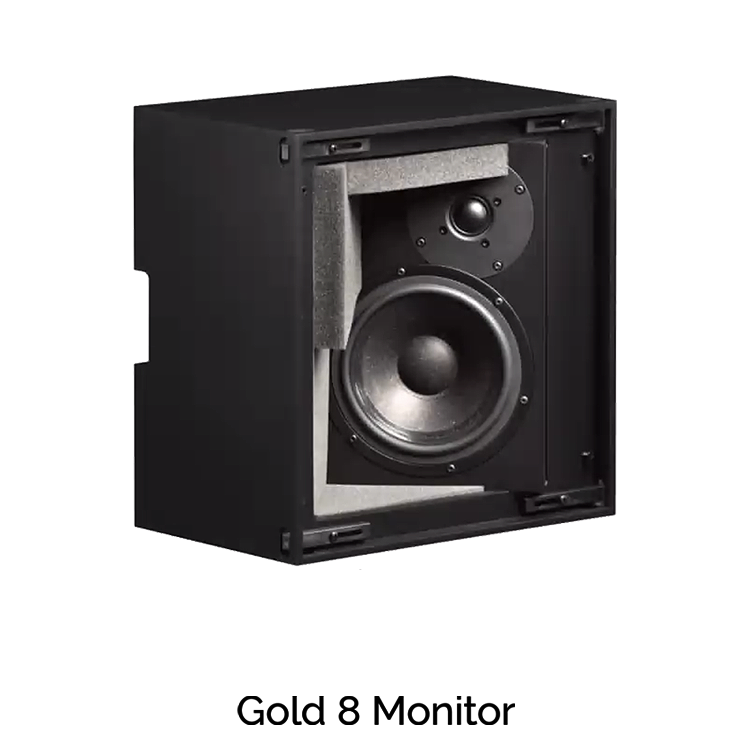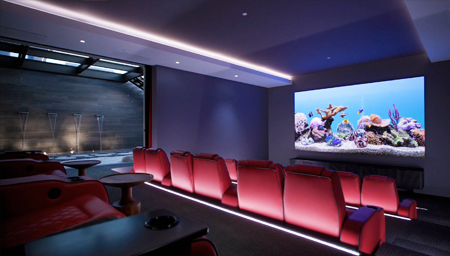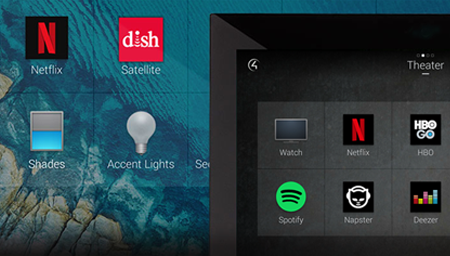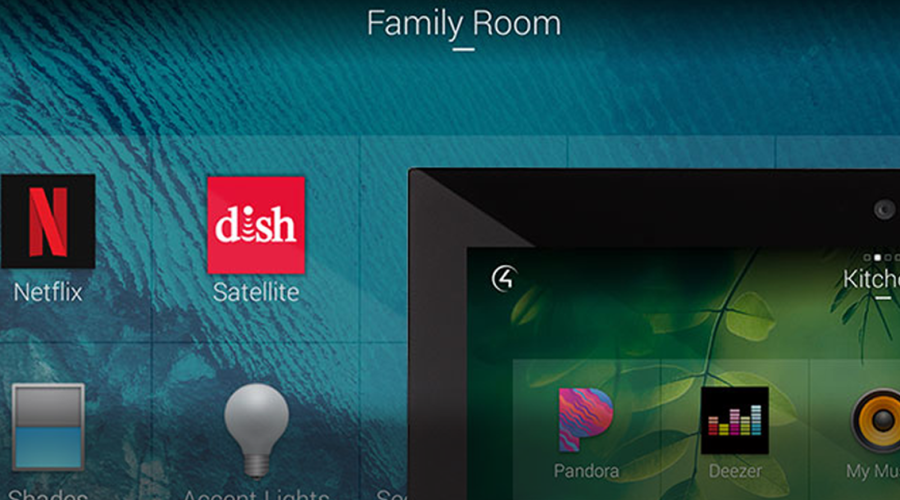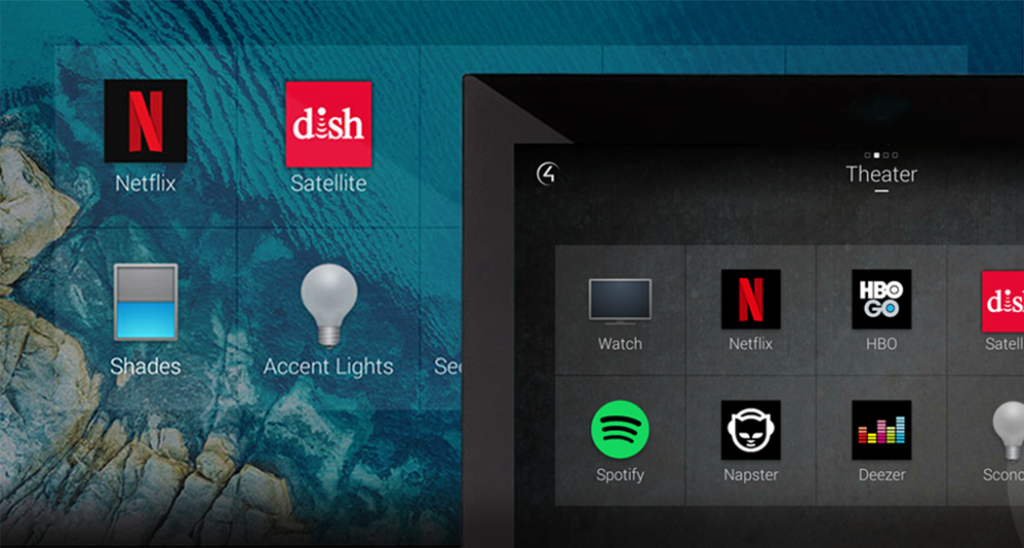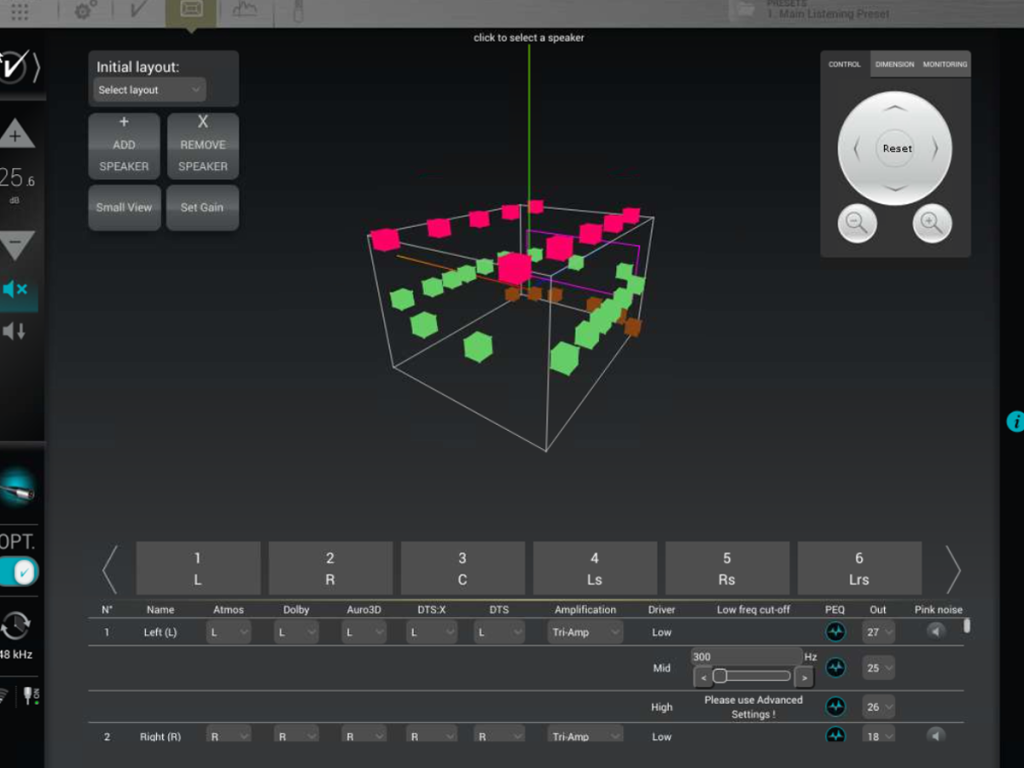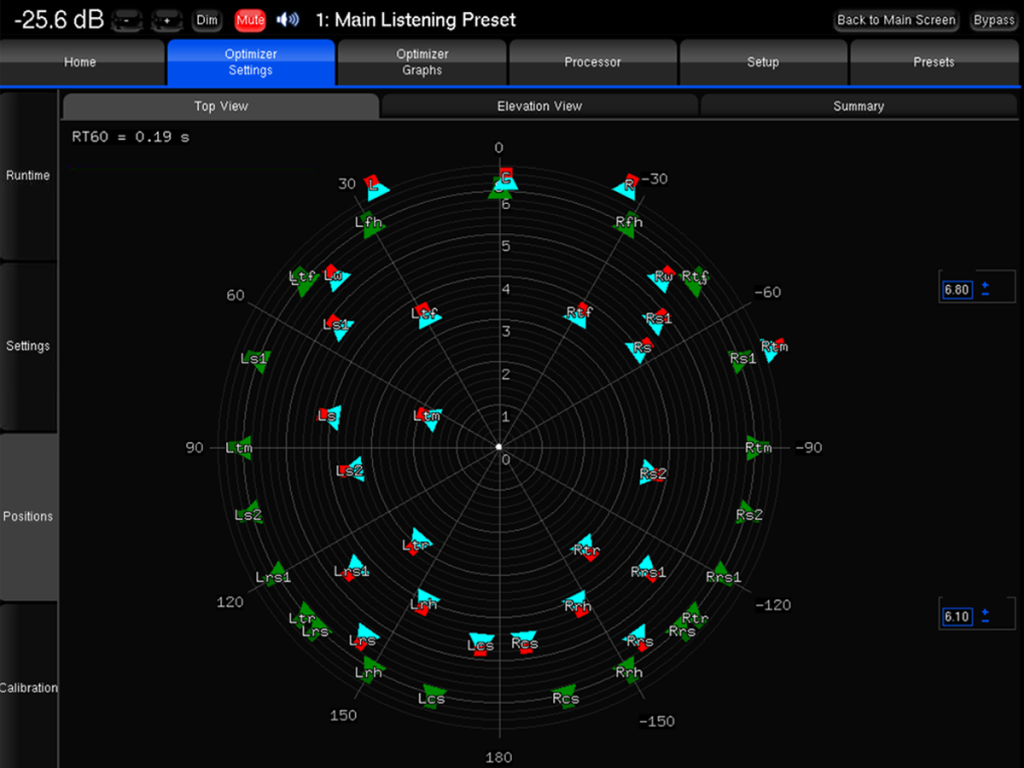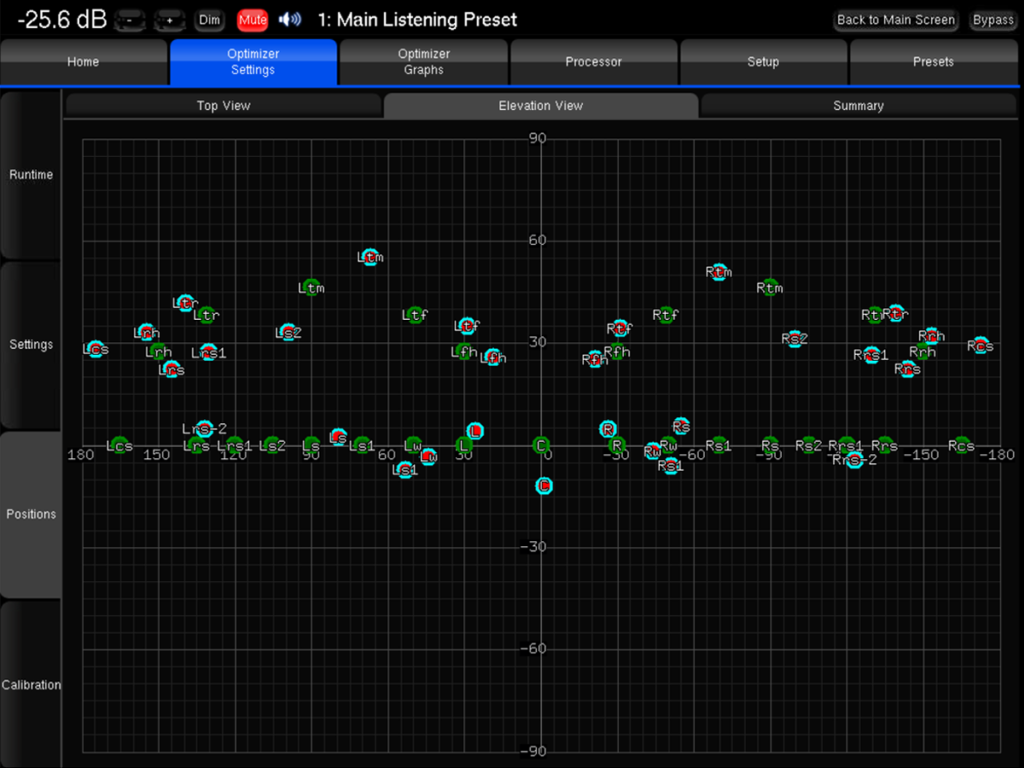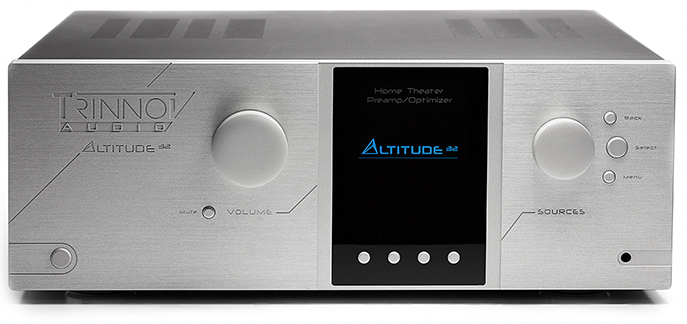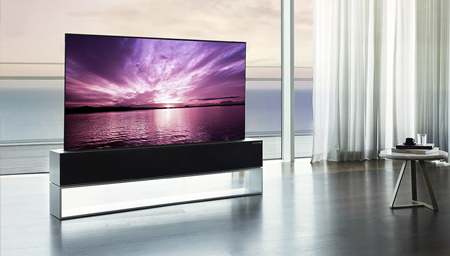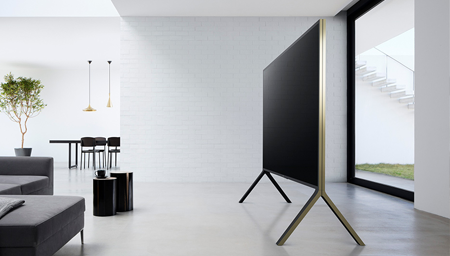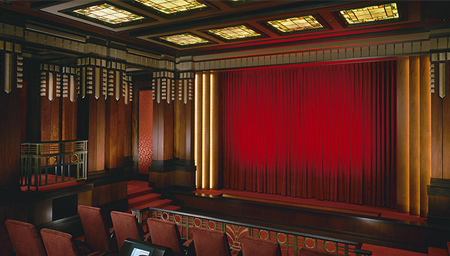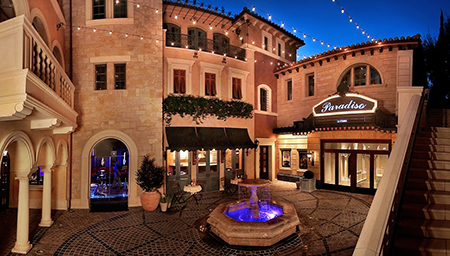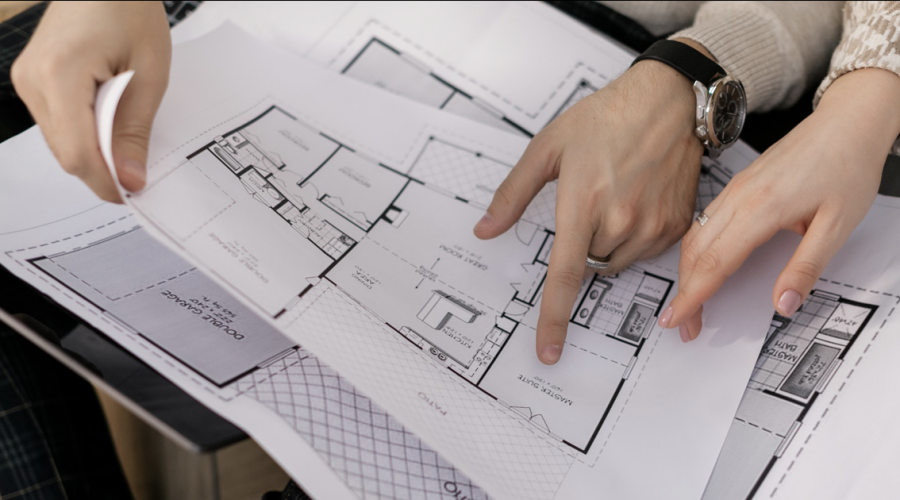Achieving Serenity: The Speaker System
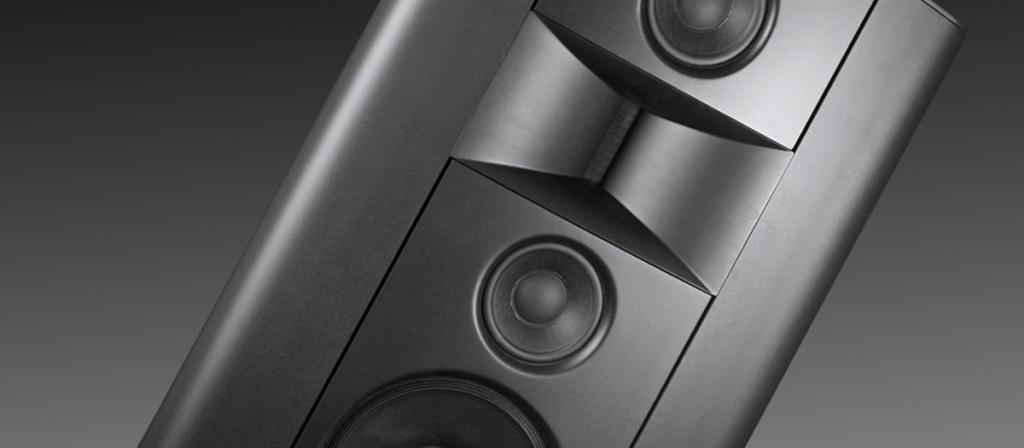
Achieving Serenity | The Speaker System
THE SPEAKERS IN SERENITY
14 custom Gold Monitors
4 standard Gold Monitors
2 custom Gold 10 Monitors
2 custom Gold 8 Monitors
4 on-wall Silver Subs
4 Cinema Reference Surrounds
2 Cinema Reference LCR
1 custom Cinema Reference center
2 custom Cinema Reference 121
subwoofers
The tech team faced every imaginable hurdle installing a
35-speaker Atmos system in the theater but still achieved stellar results
by John Sciacca
May 20, 2022
The home theater is Serenity’s audio video crown jewel but it offered by far the most significant design and installation challenges. “It wasn’t as if the theater could have been redesigned with walls or with better acoustical speaker placement. It just wasn’t possible,” integrator Jeff Williams stated. “So, it was a big challenge, especially with the number of speakers required for Dolby Atmos.”
From the get-go, Williams knew he was going to need expert help, and he went to Triad Speakers and its design team to see what was possible. “They were really the ones that spearheaded that entire design, which was really nice for us.”
Triad and Control 4 Regional Manager Robert Melendez recalled: “I remember Jeff saying, ‘You know, I have this awesome opportunity , but I don’t know how we’re going to do it. They want to do a Zen Garden on the side and they want to have a glass wall.’
“I think it’s the most unique residential space I’ve ever worked on. The owner said, ‘We want the theater right there.’ Right outside of there they had the car room and a dance floor, and that is all completely open, but they still wanted to have a dedicated theater experience.”
One of the benefits of working with Triad was the company’s acoustical engineering and customization, and using their technical expertise to get excellent sound from a room that offered numerous sonic and construction challenges. “From Triad’s standpoint, we could pretty much adapt to anything because everything’s engineered and made according to spec,” Melendez said. “It was a matter of dealing with whatever infrastructure was there.”
Getting the best possible Dolby Atmos performance in a room that didn’t allow for optimal speaker placement meant getting creative. It also meant taking advantage of the speaker remapping feature into the Trinnov Altitude processor to create phantom or virtual speaker locations. “Triad was able to design it in virtual reality,” Williams explained, “where they could manipulate the soundwaves to create phantom speaker points at ear level around you. The engineers worked on it for several months, using their incredible design team and the acoustic rooms they have.”
“They got to certain points and realized, OK, for the space, the layout of the room, and the seating, we need to place these speakers here to create this virtual zone,” Melendez stated.
But just because that’s where a speaker should go, doesn’t mean it could. And that meant being flexible and able to customize. “The whole project was in motion the same time as the design was under construction, so we had to throw quite a few audibles,” Melendez said, “There were around five or six times we had to go back and move and redesign and customize because there was something going on in the space we needed the sound to come from, so we had to reposition speakers and create virtual zones. Or they used that portion of the ceiling for things like wire runs or pipes, which killed the area we had originally allocated for speakers. And that meant going to our design team and having them restructure the size or placement of speakers.
“At one point, a spot we needed for a speaker had a huge pipe going through it, so we re-engineered the speaker to fit around the pipe at the necessary angle and give us the right performance. A good majority of the speakers in the theater were completely custom in order to get the acoustics and experience we were looking for.”
Delivering cinematic performance with reference volume levels required using Triad’s Cinema Reference Series for the three front channels as well as for the side-wall surround channels. Seismic bass is delivered from two 21-inch subs in the front. But even with the size and number of speakers required—a total channel layout of 19.6.10, with 19 listener-level speakers, six subwoofers, and ten height channels—the room retains a clean luxury look, without any electronics detracting from the experience.
“Almost every speaker is hidden by cloth,” Williams explained. “There are also very few speakers in the system that are flat baffled—most are angled. And they’re placed within an inch of where we’d planned so that the sound acoustics are correct in the space. The cabinet behind the last row of furniture actually has a speaker in each end of it at chair level. And then we have multiple speakers in the soffit and the lid.”
“When you play your movie clips for people and demonstrate what the theater can do, it completely blows them away,” Melendez said. “And comments like ‘This is completely amazing!’ or, ‘This is one of the best theaters I’ve ever heard!’ are often followed by, ‘I don’t know how you guys accomplished this!'”
Probably the most experienced writer on custom installation in the industry, John Sciacca is co-owner of Custom Theater & Audio in Murrells Inlet, South Carolina, & is known for his writing for such publications as Residential Systems and Sound & Vision. Follow him on Twitter at @SciaccaTweets and at johnsciacca.com.
© 2025 Cineluxe LLC
